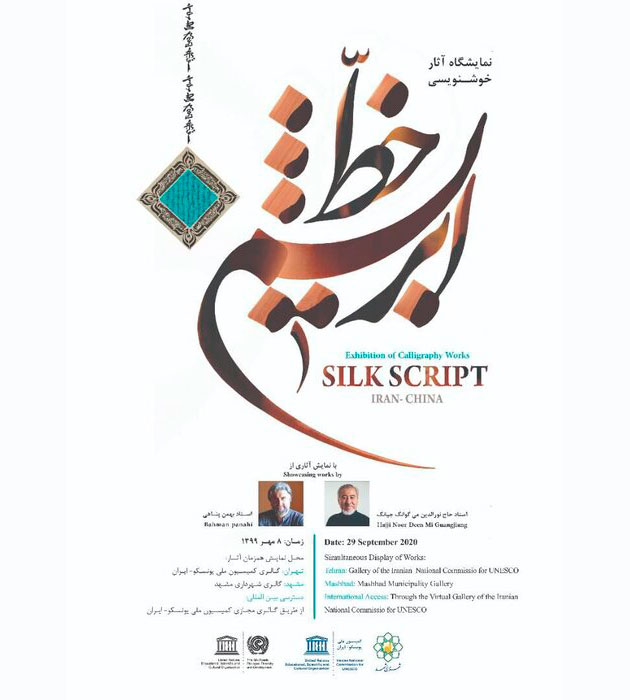Chinese, Iranian calligraphers team up for exhibition “Silk Script”
Iranian calligrapher Bahman Panahi and the Chinese calligrapher of Islamic scripts, Hajji Noor Deen Mi Guang Jiang, have teamed up to display their latest works in a joint online exhibition.
The exhibition, which has been organized by the Iranian National Commission for UNESCO, will be launched on September 29 on the web site gallery.irunesco.org.
The virtual form of the exhibition has been designed at the tomb of Ferdowsi, the poet of the epic Persian masterpiece Shahnameh. Copies of the artworks will be showcased at exhibits in Tehran and Mashhad at the same time.
In a press release published by the commission on Tuesday, Panahi expressed his happiness over the organizing the event and said, “I think that this exhibition will be really helpful and inspiring for future plans.”
Panahi has studied art at the College of Fine Arts at the University of Tehran, ESAD - École Supérieure d'Art et de Design de Valenciennes, France, and Paris-Sorbonne University. He wrote his doctoral thesis on connections between music and calligraphy.
He has held courses and exhibitions at world-renowned academic centers, including Harvard University and Northeastern University.
Born in 1964, Hajji Noor Deen Mi Guang Jiang, who is an expert in Chinese style Islamic calligraphy and a native of China’s Shandong Province, teaches at an Islamic college in Zhengzhou, the capital city of Henan Province in China.
In 1997, he was the first Chinese Muslim to be awarded the Egyptian Certificate of Arabic Calligraphy and to be admitted as a member of the Association of Egyptian Calligraphy.
During the 3rd Global Islamic Economy Summit in Dubai in 2016, he received the Dubai Islamic Economy Award “in recognition of his valuable contribution toward the development of the global Islamic economy.”
His work has been displayed around the world and has been acquired for the permanent collections of many museums including the British Museum, San Francisco Asian Museum, National Museum of Scotland and Harvard University Art Museum.
Source: Tehran Times
 Chinese, Iranian calligraphers team up for exhibition “Silk Script”
Chinese, Iranian calligraphers team up for exhibition “Silk Script”Calligraphy is frozen poetry.



